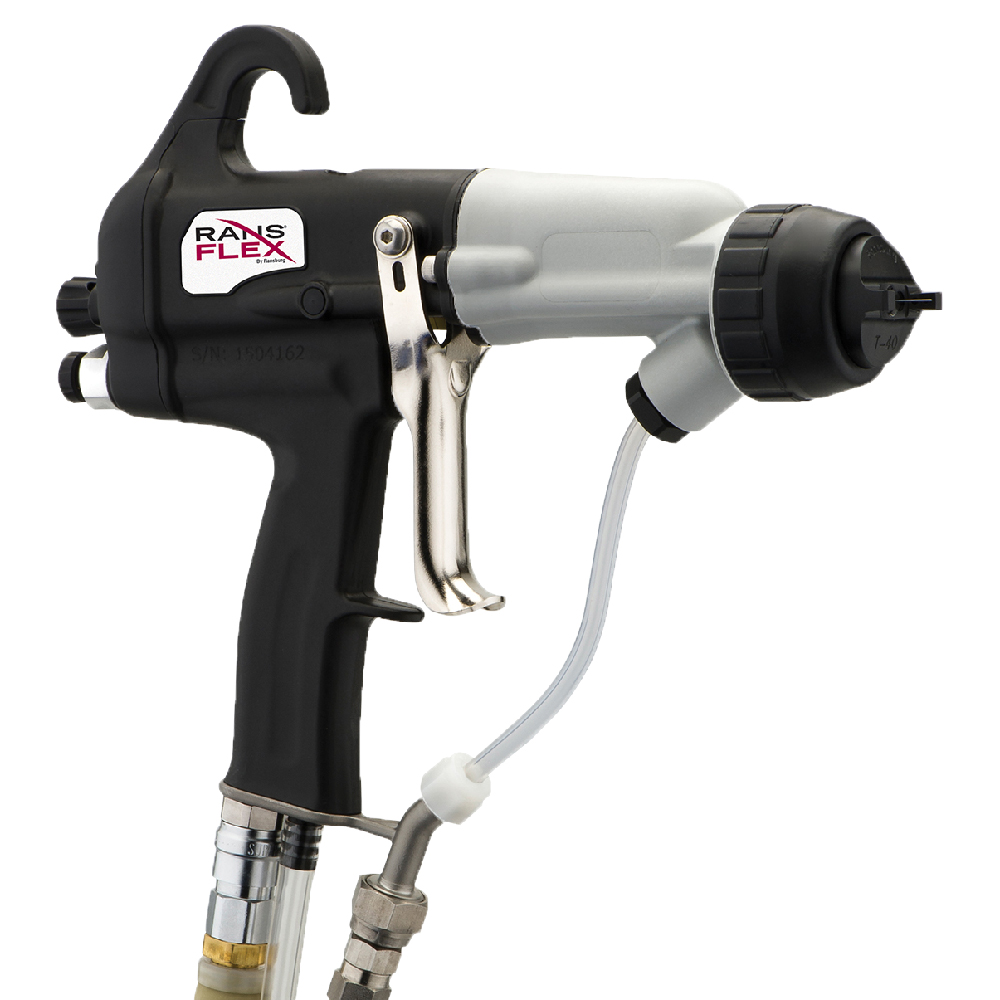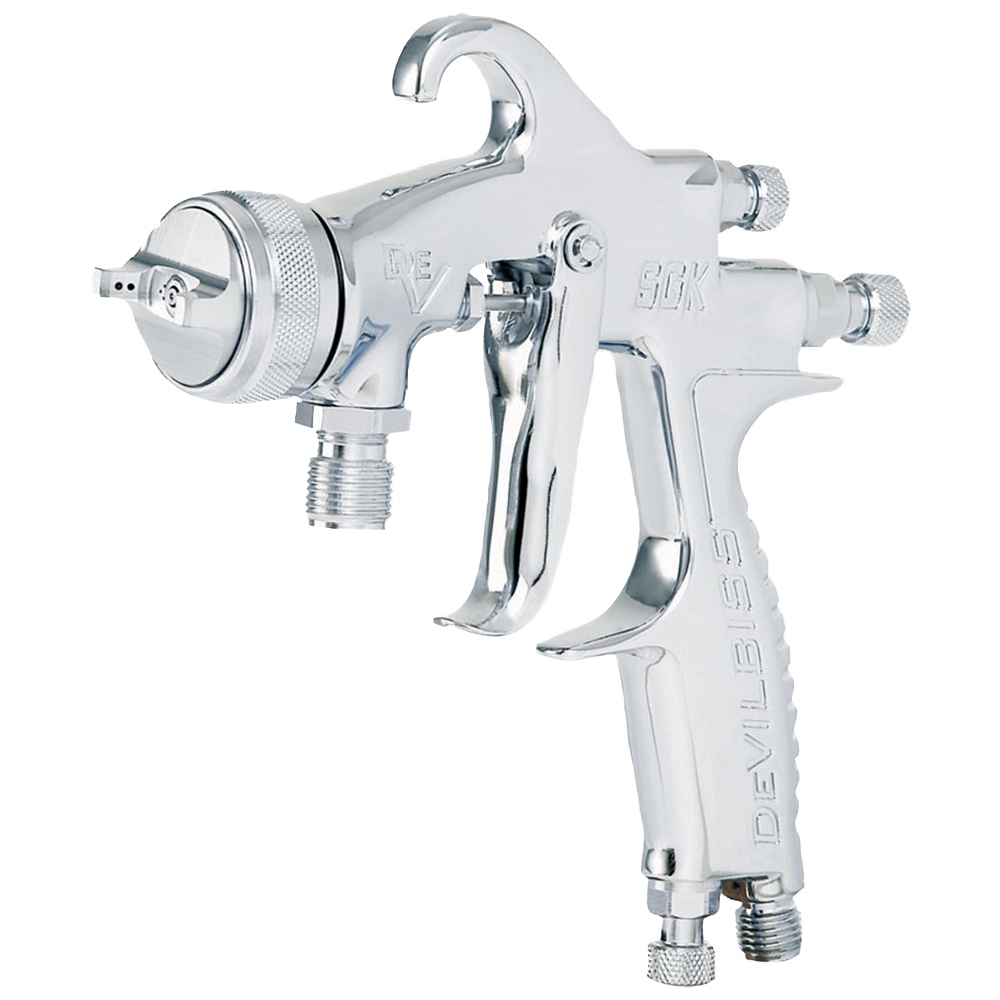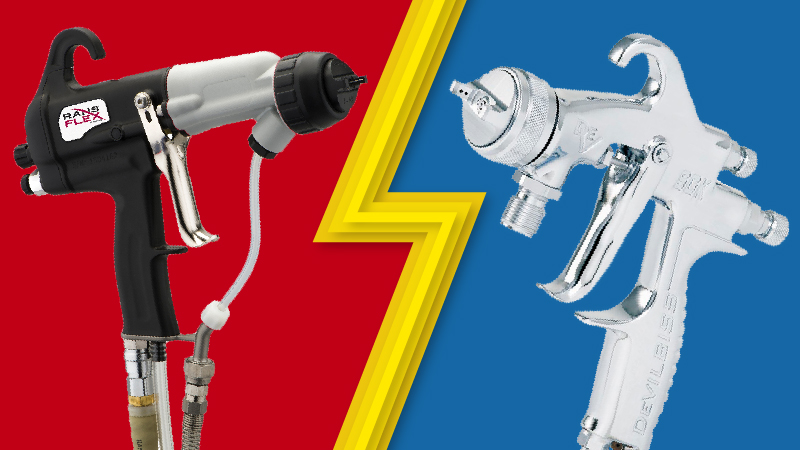At some point every industrial finishing production line manager faces the question: electrostatic vs conventional, which one suits my needs better? Both electrostatic atomization and conventional spray painting have their own advantages and disadvantages.
In this article, we will compare and contrast electrostatic atomization and conventional spray painting in more detail. We will discuss the advantages and disadvantages of each method, as well as the types of coatings that can be applied using each method. We will also provide guidance on how to choose the right method for your specific application.
Regardless of the specifics of your production, it is important to understand the differences between electrostatic atomization and conventional spray painting. By choosing the right method for your application, you can save time and money, and achieve the best finish possible.
What is electrostatic atomization?
Electrostatic atomization is a process of using an electric field to create a spray of charged droplets. This is done by applying a high voltage to a nozzle, which causes the liquid to break up into small droplets. The droplets are then repelled from the nozzle by the electric field, creating a spray.
It has a number of advantages over traditional atomization methods, such as pressure atomization. Electrostatic atomization can produce smaller droplets, which can improve the coverage and uniformity of the spray. It can also reduce overspray, which can save material and reduce environmental impact.
This is a versatile and powerful technology that has a wide range of applications. It is likely to become even more widely used in the future as technology continues to develop and improve. If you want to know more in detail about this topic, we recommend you read the article “Electrostatic atomization: What is it and what equipment is needed” that we have previously published.

Advantages of electrostatic atomization
Electrostatic atomization has a number of advantages over traditional atomization methods, such as conventional spray painting.
Smaller droplets: Can produce smaller droplets than traditional atomization methods. This can improve the coverage and uniformity of the spray, as well as the penetration of the spray into porous materials, leading to smooth and uniform coatings.
Reduced overspray: Can reduce overspray by up to 90%. This can save material and reduce environmental impact.
Complex surfaces: Charged paint droplets enhance coating adhesion and wrap-around on complex target shapes.
Improved efficiency: The efficiency of the atomization process can be improved by up to 50%. This can save time and energy.
Reduced waste: The waste can be reduced by up to 70%. The material that was not used can be recovered and reused. This can save money and reduce environmental impact.
Versatility: Can be used with a wide range of coating liquids. Allows precise control over spray pattern and coating thickness.
Ready for automation: It is suitable for automated and robotic coating applications.
Disadvantages of electrostatic atomization
Of course, electrostatic atomization is not a perfect process, so it has a number of disadvantages over other atomization methods.
Higher initial cost: Requires specialized high voltage components which are more expensive than traditional atomization equipment.
Increased complexity: The systems are more complex than traditional atomization systems. This can require additional training and expertise to operate and maintain the equipment.
Safety concerns: The systems generate high voltages, which can pose a safety hazard. Conductive targets can create electrical discharge issues. It is important to take proper safety precautions when using electrostatic atomization equipment.
Special coatings: Paints must be formulated to be compatible with electrostatic charging.
Application limitations: The distance between nozzle and target is limited by charge dissipation.
Environmental conditions: The coating performance can be affected by environmental conditions like humidity and temperature.
Training required: Skill is needed to properly adjust and maintain proper nozzle voltage. Buildup of charge on coated parts may require mitigation techniques.
Overall, electrostatic atomization offers a number of advantages over traditional atomization methods. However, it is important to weigh the advantages and disadvantages before deciding whether or not to use electrostatic atomization.
Applications for electrostatic atomization
Electrostatic atomization is a good choice for industrial finishing production lines where the following factors are important:
High quality finish: Can produce a high-quality finish with minimal overspray. This is important for applications where a high-quality appearance is required, such as automotive painting and furniture finishing.
Uniform coating: Can produce a very uniform coating, even on complex shapes and surfaces. This is important for applications where a uniform coating is essential for performance or durability, such as aircraft and marine coatings.
Reduced VOC emissions: Electrostatic atomization can help to reduce VOC emissions from the painting process. This is important for companies that are trying to comply with environmental regulations or that are committed to reducing their environmental impact.
Examples of industries where electrostatic atomization can be used
Here are some specific examples of industrial finishing production lines where electrostatic atomization is commonly used:
Automotive painting: It is used to paint cars, trucks, and other vehicles. It can produce a high-quality finish with minimal overspray, which is important for the automotive industry.
Furniture finishing: It is used to finish wood furniture. It can produce a uniform coating on complex shapes, such as chair legs and tabletops.
Aircraft painting: It is used to paint aircraft. It can produce a uniform coating on complex shapes, which is important for aircraft performance.
Marine coatings: It is used to apply marine coatings to ships and boats. It can produce a uniform coating that is resistant to corrosion and other environmental factors.
Agriculture: It is used to apply pesticides and herbicides to crops. It can reduce the amount of pesticide or herbicide used, and it can also improve the efficacy of the treatment.
Medicine: Electrostatic atomization is used to deliver drugs and other therapies to patients. It can improve the absorption of drugs and reduce side effects.
Examples of surfaces where electrostatic atomization can be used
Electrostatic atomization can also be used in any of the following surfaces, for industrial finishing applications:
Metal: Can be used to apply coatings to a variety of metals, such as steel, aluminum, and copper.
Plastics: Can be used to apply coatings to a variety of plastics, such as ABS, PVC, and polycarbonate.
Wood: Electrostatic atomization can be used to apply coatings to a variety of wood products, such as plywood, MDF, and hardwood.
If you are considering using electrostatic atomization for your industrial finishing production line, it is important to consult with a qualified expert to ensure that you are choosing the right equipment and settings for your application. We can help you to resolve all your doubts.
What is conventional painting?
Conventional painting is a traditional method of applying a liquid coating to a surface. It is a versatile and cost-effective method that can be used to coat a wide range of materials, including metals, plastics, and wood.
Spray painting is the most common type of conventional painting. It involves using a spray gun to apply the coating to the surface. Spray painting can be done manually or automatically.
Conventional painting is a multi-step process that typically includes the following steps:
- Surface preparation: The surface must be clean and free of grease and dirt before the coating can be applied. This may involve sanding, blasting, or cleaning the surface with a solvent
- Priming: A primer is often applied to the surface before the topcoat. This helps to improve the adhesion of the basecoat or topcoat and to provide a uniform surface
- Basecoat or Topcoat: The basecoat is the final layer of paint that is applied to the surface. It provides the desired color, finish, and protection
- Clearcoat: In some cases, an extra layer of transparent coating is applied to protect the base color and provide some depth to the finish.
Conventional painting is a relatively simple process, but it is important to follow the correct procedures to achieve a high-quality finish.

Advantages of conventional painting
There are reasons why conventional spray painting has been in used for so long. The following are some of the advantages:
Versatile: Can be used to coat a wide range of materials, shapes, and sizes.
Cost-effective: It is a relatively cost-effective method of applying a coating.
Easy to use: The equipment is relatively easy to use. Depending on the specific application some equipment may not be needed. There is a wide range of equipment available to choose from.
Durable: Conventional coatings can be very durable and can provide long-term protection against corrosion, wear, and other environmental factors.
Disadvantages of conventional painting
Still, conventional painting has not all the answers. So, we need to put here the disadvantages of this process:
Time-consuming: Can be a time-consuming process, especially if multiple coats of paint are required.
Labor-intensive: Can be labor-intensive, especially if large areas need to be coated.
Environmental concerns: Conventional coatings can contain hazardous chemicals, and the painting process can generate VOCs (volatile organic compounds).
Overspray: Can produce a significant amount of overspray, which is wasted material and can also pose an environmental hazard.
Require expertise: Quality and consistency depends more on painter skill and technique.
Overall, conventional painting is a versatile and cost-effective method of applying a coating to a surface. It is important to weigh the advantages and disadvantages before deciding whether or not to use conventional painting for a particular application.
Applications for conventional painting
Conventional spray painting is a good option for industrial finishing production lines where:
A wide variety of coatings need to be applied: Conventional spray guns can be used to apply a wide variety of coatings, including paints, stains, lacquers, and epoxies. This makes them ideal for industrial finishing production lines where a variety of products need to be finished.
Complex shapes need to be finished: Conventional spray guns can be used to apply coatings to complex shapes, such as chair legs and tabletops. This is important for industrial finishing production lines where products with complex shapes need to be finished.
High production rates are required: Conventional spray guns can apply coatings quickly and efficiently. This is important for industrial finishing production lines where high production rates are required.
Examples of industries where conventional painting can be used
Here are some industries and applications where conventional spray painting is commonly used for industrial finishing:
Automotive: For painting trucks, buses, agricultural equipment, construction machinery, etc. Spray painting provides high-quality, durable, uniform finishes.
Aerospace: Spray painting is used for aircraft, missiles, satellites, and components with primers, coatings, and specialty paints.
Appliances: Finishing the exterior metal surfaces of appliances like refrigerators, washers, ovens, etc.
Agricultural Equipment: Coating large farm implements like tractors, combines, implements, grain bins, and silos.
Construction/Mining Equipment: Finishing bulldozers, cranes, loaders, mining machinery, scaffolding, and other large equipment.
Marine/Ships: Applying specialized paints to the hull, deck, superstructure and components of ships, boats, and barges.
Railcars/Locomotives: Spraying exterior and interior surfaces of subway cars, train cars, railroad engines, etc.
Heavy Trucks: Finishing semi-trucks, dump trucks, trailers, and other over-the-road machinery.
Metal Structures: Painting bridges, buildings, towers, tanks, and structural steel elements.
In general, any production line dealing with large metal machinery, vehicles, or equipment can benefit from conventional spray painting systems for protective, decorative finishes.
Electrostatic vs Conventional painting: How to choose
When choosing between conventional spray painting and electrostatic atomization for an industrial finishing production line, it is important to consider the specific needs of the application.
Conventional spray painting is a good option for applications where a wide variety of coatings need to be applied, complex shapes need to be finished, and high production rates are required.
On the other hand, electrostatic atomization is ideal when high quality finish, uniform coating, and reduced VOC emissions are desired.
The best finishing method for a particular application will depend on a variety of factors, including the type of material being coated, the desired finish, the budget, and the environmental regulations that must be met.
In recent years, there has been a growing trend towards using more environmentally friendly and sustainable finishing methods, such as powder coating and liquid electrostatic.
These methods can offer some advantages over conventional painting, such as reduced VOC emissions, improved transfer efficiency, and increased durability. However, they can also be more expensive and require more specialized equipment.
What to consider before implementing electrostatic atomization
Here are some additional things to consider when deciding whether to use electrostatic atomization:
The type of material being atomized: Electrostatic atomization is not suitable for all materials. For example, it cannot be used to atomize materials that are highly viscous or that contain conductive particles.
The desired quality of the spray: Electrostatic atomization can produce a high-quality spray, but it is important to choose the right equipment and settings for the application.
The operating environment: The systems are sensitive to environmental factors such as humidity and temperature. It is important to choose the right equipment and settings for the operating environment.
If you are considering using electrostatic atomization, it is important to consult with a qualified expert to ensure that you are choosing the right equipment and settings for your application.
Whatever your industrial finishing needs might be, we are ready to help you. Feel free to contact us at your earliest convenience.





